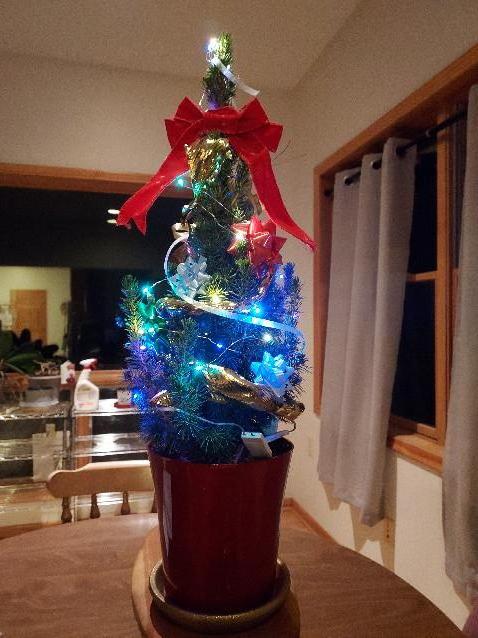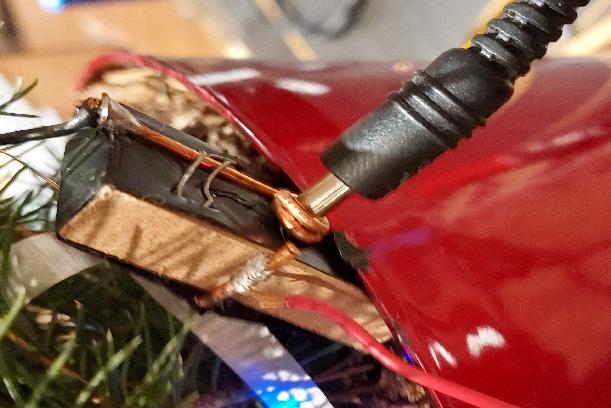
The blogs are organized by date.
Comments will appear when we've had time to check them. Apology for the inconvenience, but it's a way to keep phishers and spammers off the page.

The blogs are organized by date.
Comments will appear when we've had time to check them. Apology for the inconvenience, but it's a way to keep phishers and spammers off the page.
I've been eyeing them since they showed up in November. Once Thanksgiving was over, I allowed one to follow me home.
I decorated it with some fancy ribbon as garlands and a few pre-made mini-bows. I ordered strings of doll-house holiday lighting to finish the decorating.
The doll-house holiday lights are LED's about half the size of a grain of rice on very fine wire. They are powered by a small, flat battery like you put in a car's remote control. The package had 3 sets of lights, each 3 feet long. I thought that was too much, but it turned out to be just right.

The set of doll-house fairy lights run off a pair of 2032 flat batteries.
After a couple evenings, the flat batteries ran flat, and the lights got dim.
So, any normal person would run out to the nearest store and buy six more little batteries.
Unless, of course, that person had a collection of wall-warts in the basement and a soldering iron begging to be used.
Cheap wallwarts sometimes just have rectifiers, but no capacitors to balance the output, so what you see for output isn't a steady DC voltage, but a pulsating voltage that gets up to the rated output (or a little over) at the peak.
So I grabbed my oscilloscope and hooked up the wallwart to the 'scope and watched the trace. It was nice and flat. This was a well-designed wall-wart.
I've got no idea what this wart was originally for, but it was intended to plug into a round socket with a spike in the center.
A little rummaging through spare wires, and I found a chunk of wire the right size to go into the center hole. This was also thick enough wire that I could make a coil to plug the wart into.
A few minutes in my woodshop, and I had a little chunk of wood with a hole for the center wire and space for the coil.
Now comes the fun part, putting it all together.
Rather than take the tree down to my shop, I decided to bring the tools to the tree and rebuild things on the dining room table.
This was nearly a good idea. Mark is always willing to supervise and put his face between me and what I'm working on. Or to organize the small pieces onto the floor.
A hot soldering iron on the table did not discourage him, much as I hoped it would. He did maintain a respectable distance from it.
I finally cut off one of the battery packs, removed the batteries, and tossed it onto the floor for him to play with.
After a few false starts, I had a receptacle for the wall-wart's plug ready to be hooked up to the tree.

On a whim I checked for the standard voltages for these little LEDs. Five volts used to be a common electronics voltage, but...
According to google, these things like voltages between 2 and 3 volts. The five and a quarter coming out of the wall wart wouldn't make them explode, but it would shorten their lifespan.
I had a pack of 330 ohm resistors sitting in the case with my soldering kit, so I put one of those inline. I had no idea how much that would drop the voltage since I've got no idea of how much power the little LEDs draw. (I assumed next to nothing.)
But 330 ohms was as good a guess as any. And besides, it's what I had.
So I soldered everything up, plugged it in and measured the voltage.
About 2.3 volts. Enough to trigger the LEDs, but not very bright.
So I added another 330 ohm resistor in parallel with the first one, dropping the resistance to 165 ohms. The voltage is now 2.6 and the LEDs are nice and bright.
And, in just three hours I saved myself from a half-hour run to the store.